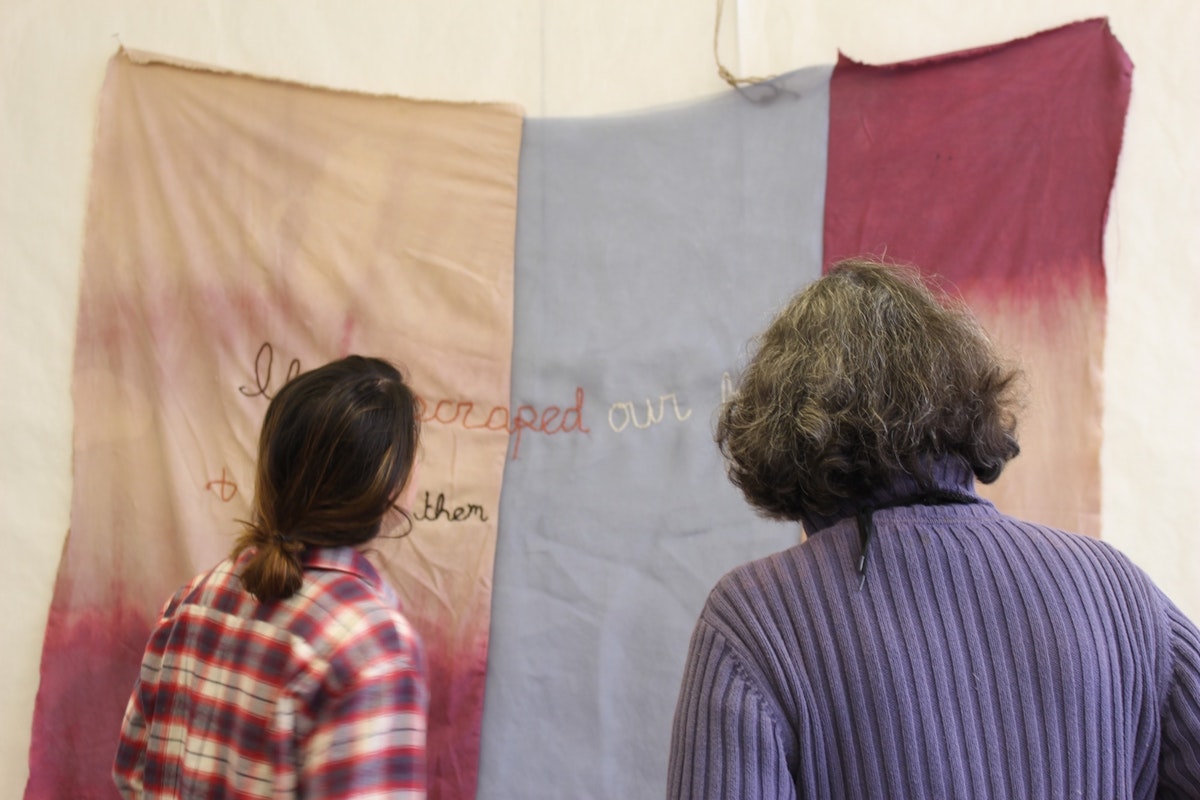Professor Sherri Smith Reflects
After 40 years of dedicated service to the school and the university, Professor Sherri Smith will retire from the Stamps School at the end of the Winter 2018 semester.
A Catherine B. Heller Collegiate Professor, Distinguished Faculty Achievement Award recipient, a cherished colleague, an active Michigan Audubon Society member, and an incredible teacher, Smith joined the UM faculty in 1974. She was among the first group of faculty to teach in the then-new Art & Architecture Building. One of a handful of women faculty at that time, she built the school’s vibrant fibers program. Herself a seminal figure in the evolution of fibers as creative practice, her impact on the field — and on building the next generation of creative practitioners — has been immense.
Smith’s work will be on view at Crooked Tree Arts Center in Petoskey from August 25-November 17, 2018 in an exhibition curated by Stamps alumna Sheila Ruen (MFA '86). Stamps Professor Franc Nunoo-Quarcoo will be designing a catalog survey of Sherri’s work to be published in tandem with the exhibition.
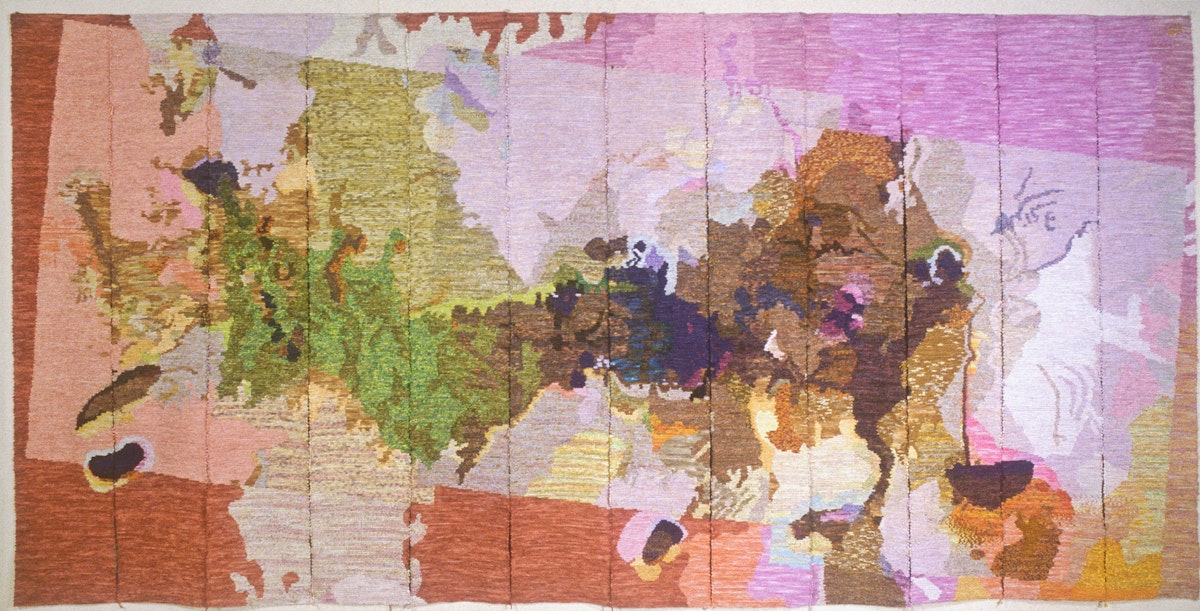
In celebration of Smith’s honorable career and upcoming exhibition, Ruen interviewed Smith about her sources of inspiration, her current work, her career, and her advice for the next generation. The following is an excerpt of that interview.
Sheila Ruen: Alright. So the first question is a big one: What inspires you?
Sherri Smith: Oh, different times of my life, different things have inspired me. Right now, most of my work is inspired by images that come back from our space program. Occasionally I’m inspired by photographs of the earth, but usually I’m looking at distant objects photographed by our space probes.

When you look at the at the whole set of images, what is it that you’re drawn to?
You know, they’re just beautiful. But not seen by many people in general. But the details can just can be stunning. Even if it’s a hellacious place, like the volcanic moon of Jupiter, Io.
...I didn’t know that they had a volcanic moon!
Yes, the volcanos shoot up blue plumes. The volcanoes are sulfur. It’s the most geologically active body in the solar system. I mean, it would be awful to go there. But it’s just beautiful to look at. All these things are different colors. Lava isn’t always the same. It changes.
Have you always been interested in space?
I was interested in Astronomy. When I was in junior high, I quickly went through all the library had on astronomy. I think if I’d complained to my parents more about it, I’m sure they could have got me into the local college library. Then I could have found out if I would wanted to be an astronomer or not. Fortunately, probably, I didn’t.
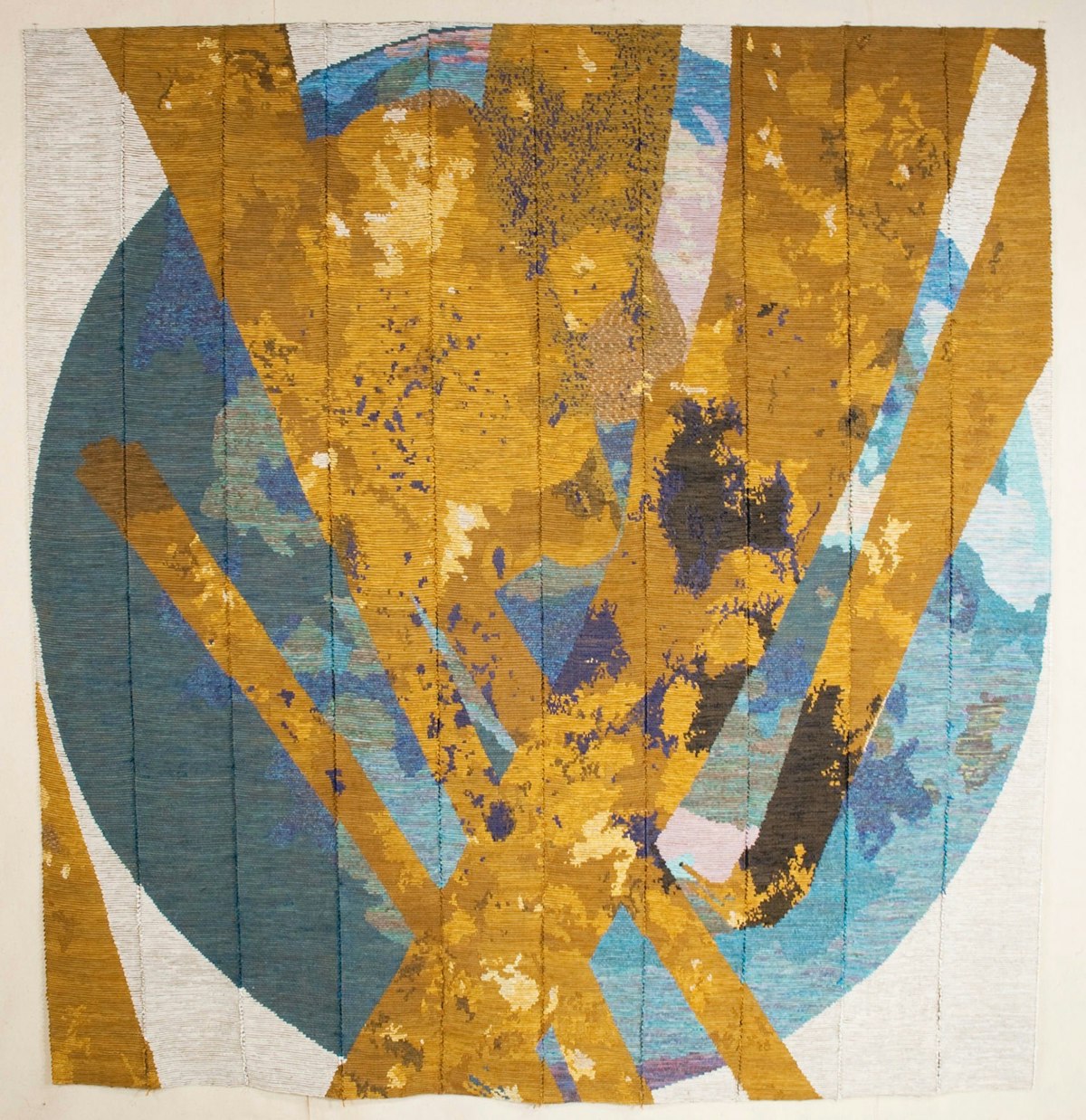
Was there a moment when you reconnected with this early interest in astronomy that you can remember?
Well, with my present series of work, I’ve decided I’d try to work with things that are totally abstract. I decided astronomy was maybe a good move because it’s what can be seen in any kind of light that astronomers study. You should see the websites of members of the Astronomy Department, compared to the websites of Physicists. They are full of wonderful images and the images are fair-use.
Has your creative process shifted or changed over the span of your career?
Well, many times. I just ran out of what I could do sensibly with one set of ideas, and moved on a number of times. And it’s always a difficult transition.

What is a great piece of advice that you hold dear?
Oh, no one’s ever given me advice, really.
(laughs) No?
No. When I became a fiber artist, it was a new field and there was no one out there who could give you advice. There wasn’t even the word, “fiber artist.”
Sherri, where did you first study?
I was an undergraduate at Stanford, they had a big book of all the courses that they regularly offered. I’m looking at their art courses and see they offered textile design. I thought: ‘Textile design! Yes, that’s it.’ Eventually I went to Cranbook for graduate school, and took up weaving as well.

What was your first weaving? What did you do to learn?
Oh, I just wove samples for quite a while. Really, that’s what I did. Because I was going to be a textile designer. And I did become a textile designer. I moved to New York, where the industry was. And I first worked for Dorothy Liebes, which was a prestigious job,but the firm was at the end of its lifetime. Then I worked for Boris Kroll Fabrics, they made top of the line fabrics for interiors.
How did you go from there to becoming an independent artist and a professor?
Well, first of all, I lost my studio partner. So I either kind of had to do something about that or leave town, basically. Or find a new studio partner, which didn’t seem easy. And I really didn’t want to stay in New York. I’m glad I lived there for a while but I’m also glad I’m not there now.
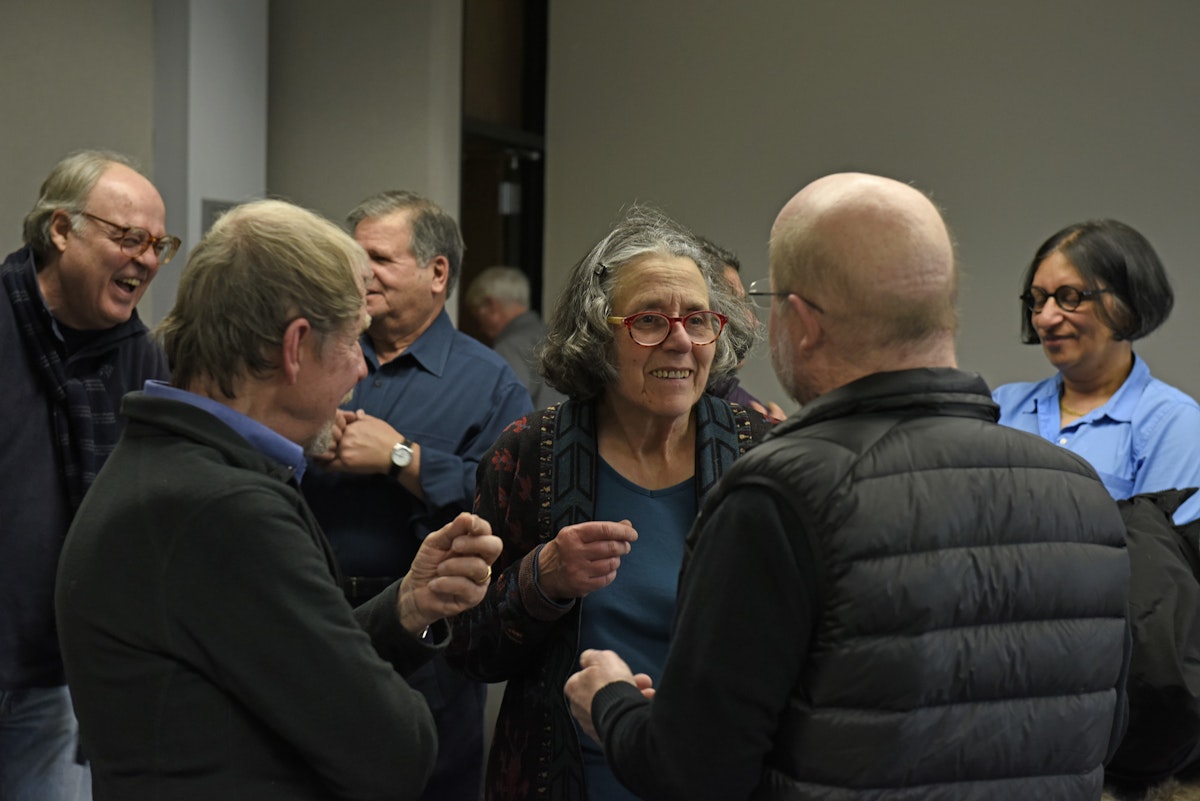
So where did you go from New York?
Oh, to a teaching job at Colorado State University. And when I was there, really just a couple of years, I was notified of a job here at the University of Michigan. I applied and got the job, but I wouldn’t leave my job at CSU until we had the new building here. So I stuck it out in Colorado for another year. So I’ve been here for a long time, since 1974.

Wow.
I came here just as the art school moved into 2000 Bonisteel. I ordered all of the equipment and stuff in the year before, so I got what I wanted.
Do you have any advice that you would like to give people that you think has been effective?
Well, it’s not so much the advice I give but I found the most powerful thing I can do for people’s work is make them dye their own yarn.
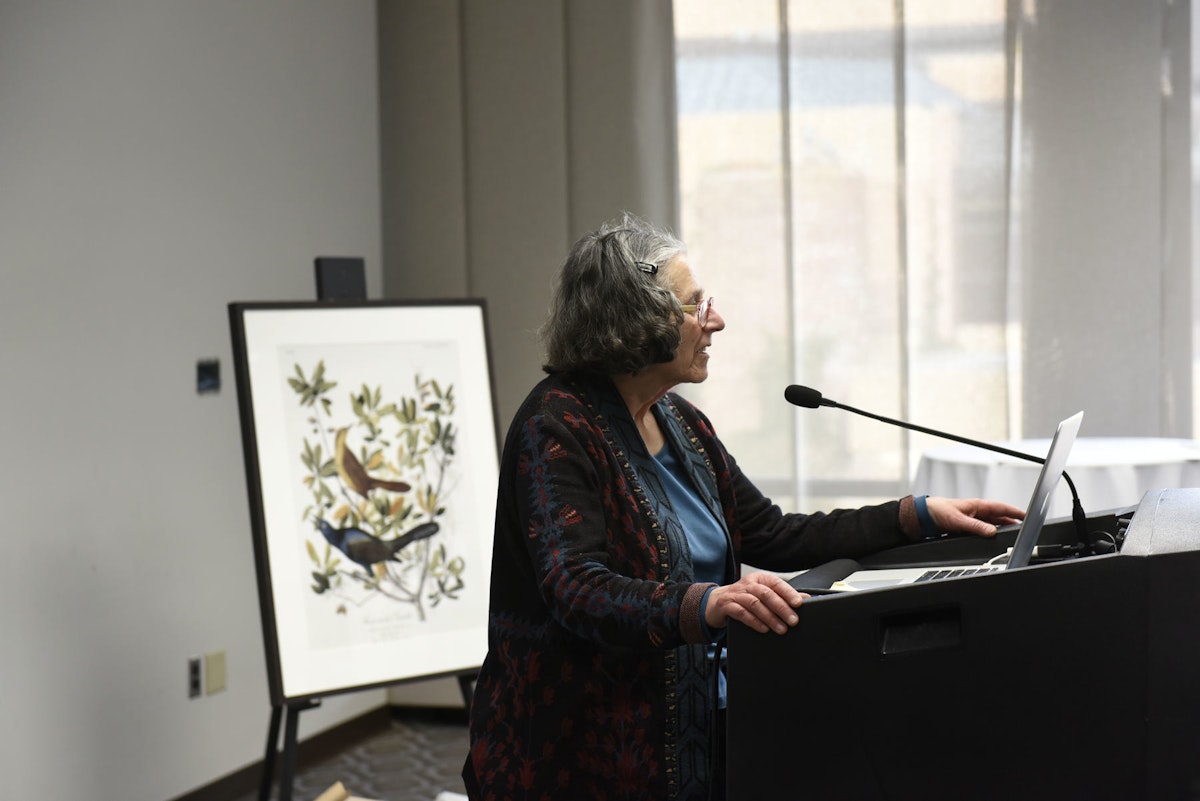
Yes. Color is the most emotional and nuanced part of enjoying and seeing.
Right, and dying it yourself, you make subtle distinctions that are unavailable to you if you buy dyed yarn. Students don’t have to be afraid of the equipment. I tell them: ‘this looks scary to you, but it’s useful to remember all of your ancestors could do this and you will be able to do it as well.’
How do you plan to spend your retirement?
Maybe, not too different from the way I spend it now, except I won’t be teaching. I probably will take up the slack with caring for injured birds. But I’ll get more creative work done.
Sherri, you had such a profound impact on so many people’s lives and careers. Thank you.
